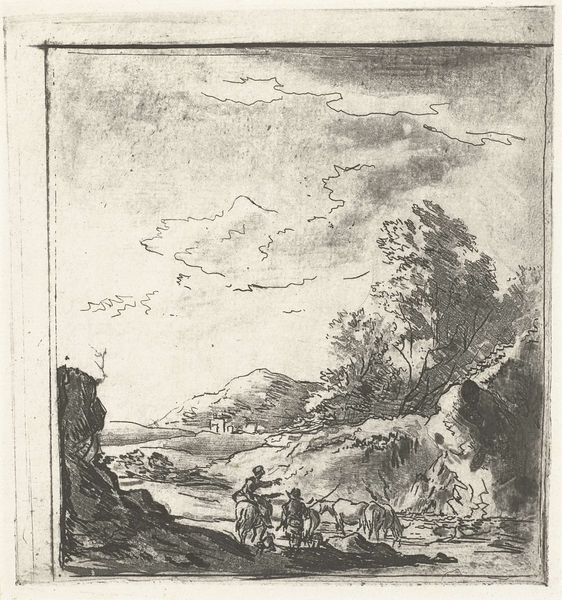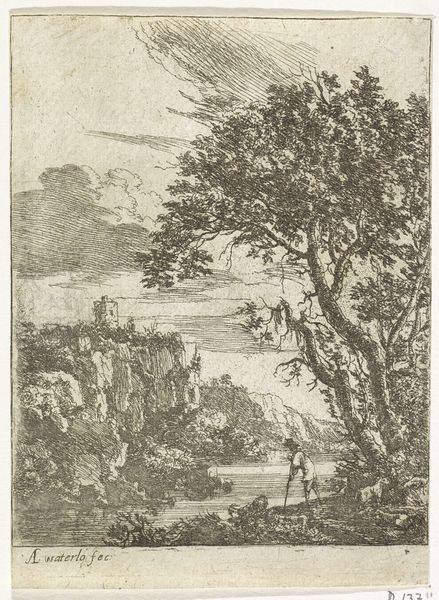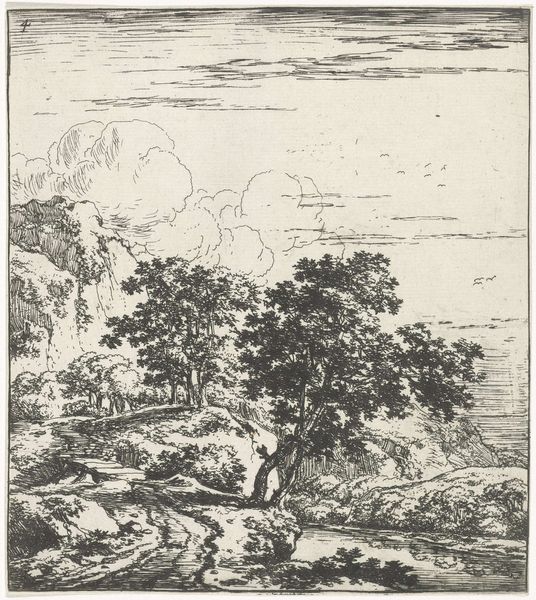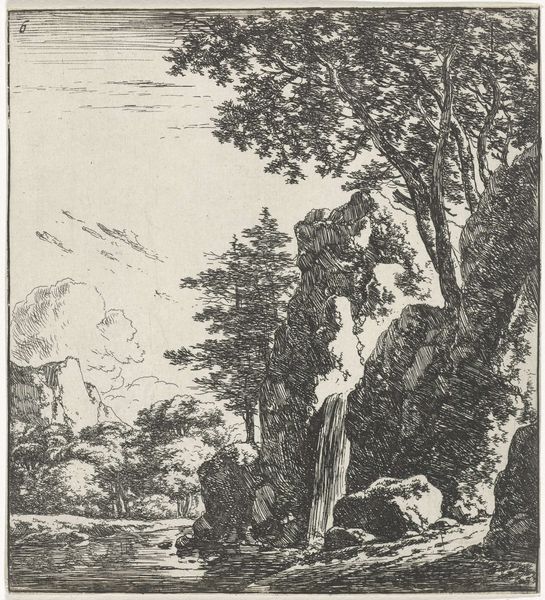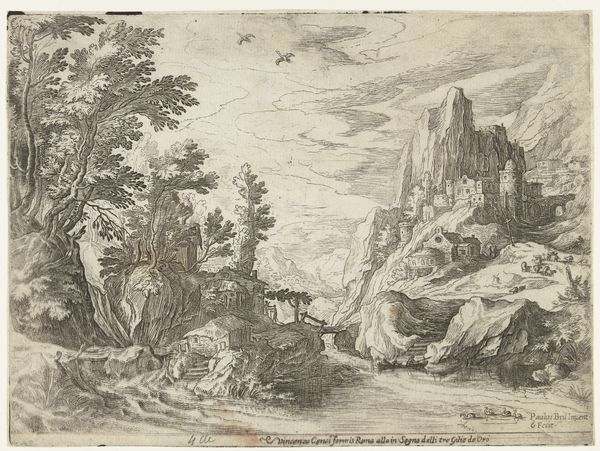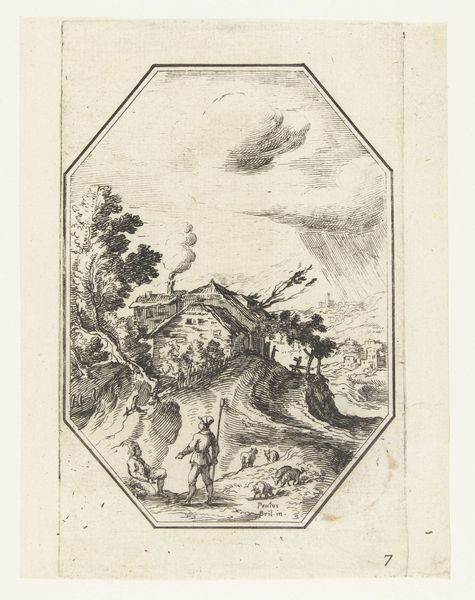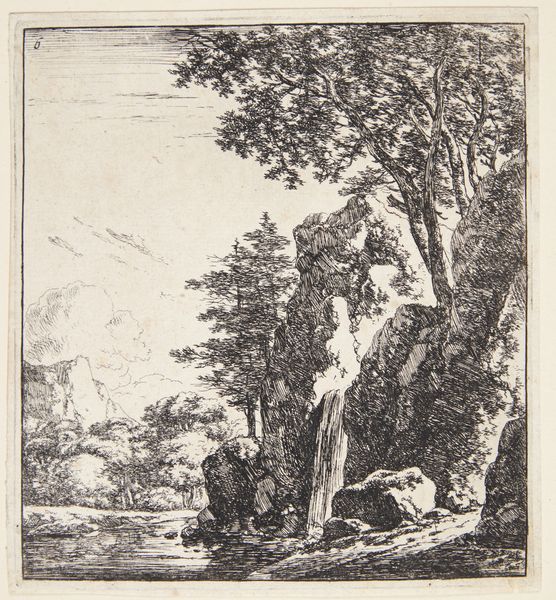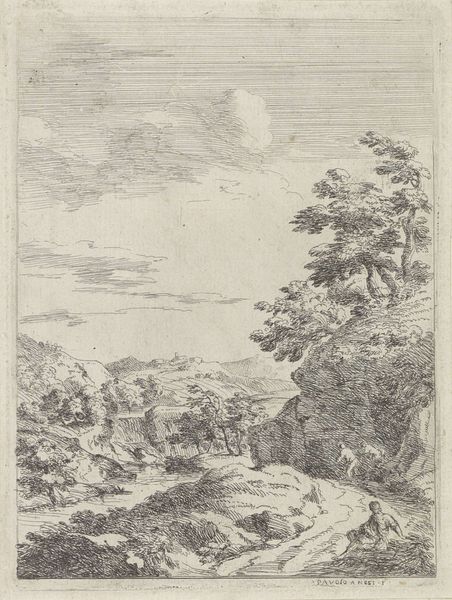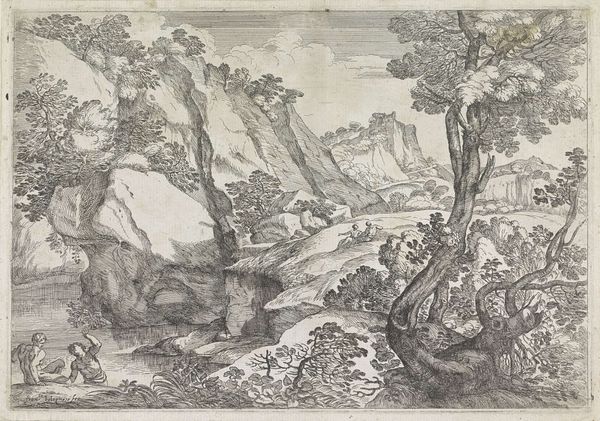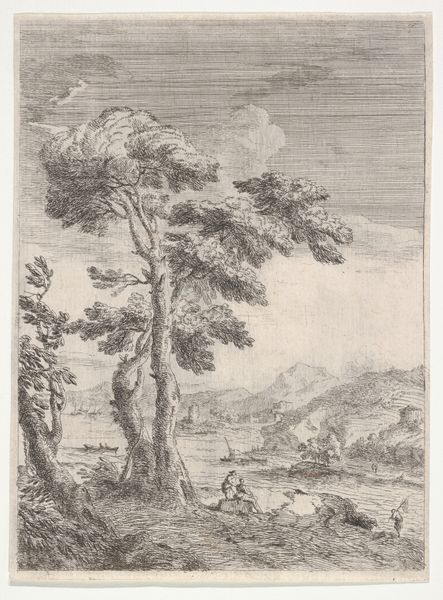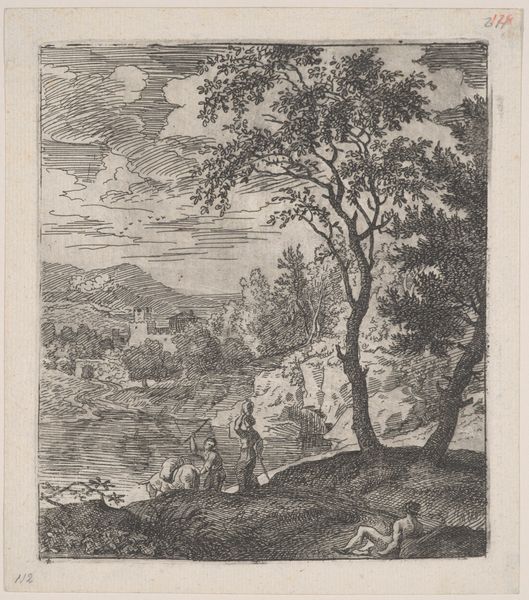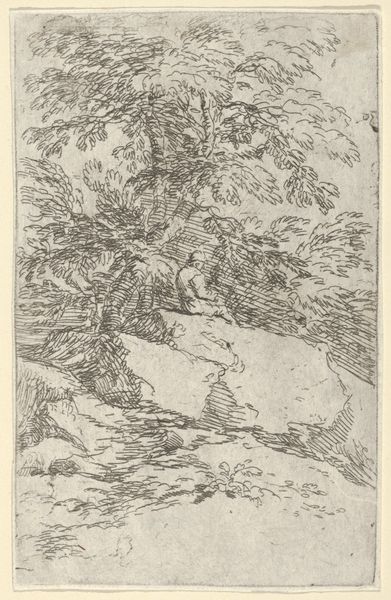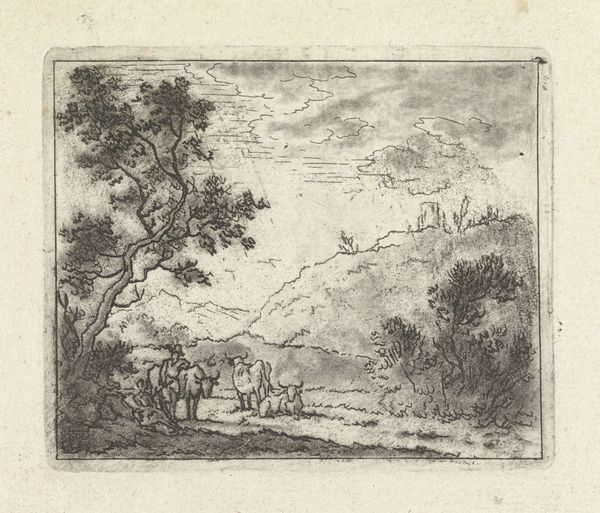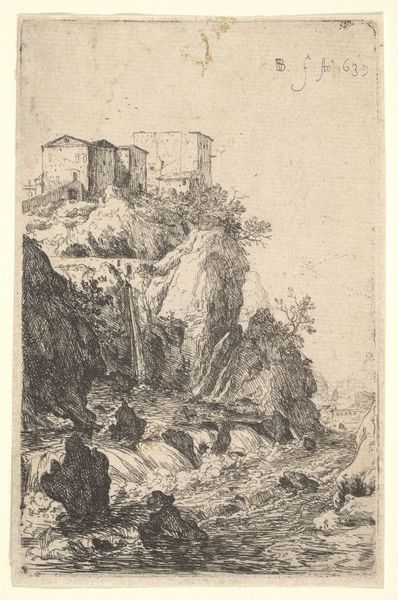
drawing, paper, ink
#
drawing
#
quirky sketch
#
mechanical pen drawing
#
pen illustration
#
pen sketch
#
landscape
#
paper
#
personal sketchbook
#
ink
#
ink drawing experimentation
#
pen-ink sketch
#
pen work
#
sketchbook drawing
#
genre-painting
#
sketchbook art
Dimensions: height 127 mm, width 117 mm
Copyright: Rijks Museum: Open Domain
Editor: Here we have Louis Bernard Coclers’ “Landschap met ruiter en herder,” created sometime between 1756 and 1817 using ink on paper. It feels like a fleeting glimpse into another time, a quick sketch capturing a pastoral moment. What’s your interpretation of this work? Curator: The magic here, for me, lies in understanding the role such sketches played in 18th-century art. Often, these weren't intended as finished pieces, but as preparatory studies or personal exercises. Consider how the rising popularity of landscape as a genre also coincided with shifts in land ownership and evolving social perceptions of nature. How might Coclers' sketch engage with those contemporary trends? Editor: That’s interesting, I hadn't thought about the connection to social changes. I was mainly focused on the composition itself, and the casual feel of the linework. Curator: The "casual feel" might belie a sophisticated understanding of pictorial structure. Think about how the placement of figures and the rough suggestion of nature speaks to artistic conventions of the time. Does it remind you of any larger trends in how landscape was being presented publicly? Was it promoting some socio-political views on land? Editor: Well, it doesn’t strike me as overtly political, but I can see how its very existence, depicting common folk within the landscape, normalizes their presence and perhaps celebrates rural life. Curator: Exactly. And consider the audience for these kinds of images. Were they primarily intended for the elite, reinforcing their idealized vision of the countryside, or for a broader public? Editor: I suppose it could be both. Something to take into account in understanding its cultural value at the time. Curator: Precisely. It is in assessing these functions and its public reception that we can grasp the history this image participated in, even incidentally. Editor: This has given me so much food for thought about how to read landscapes as historical documents, I see it now. Curator: And hopefully it’s clear how art gains its historical importance, existing in dynamic conversation with socio-political currents.
Comments
No comments
Be the first to comment and join the conversation on the ultimate creative platform.
